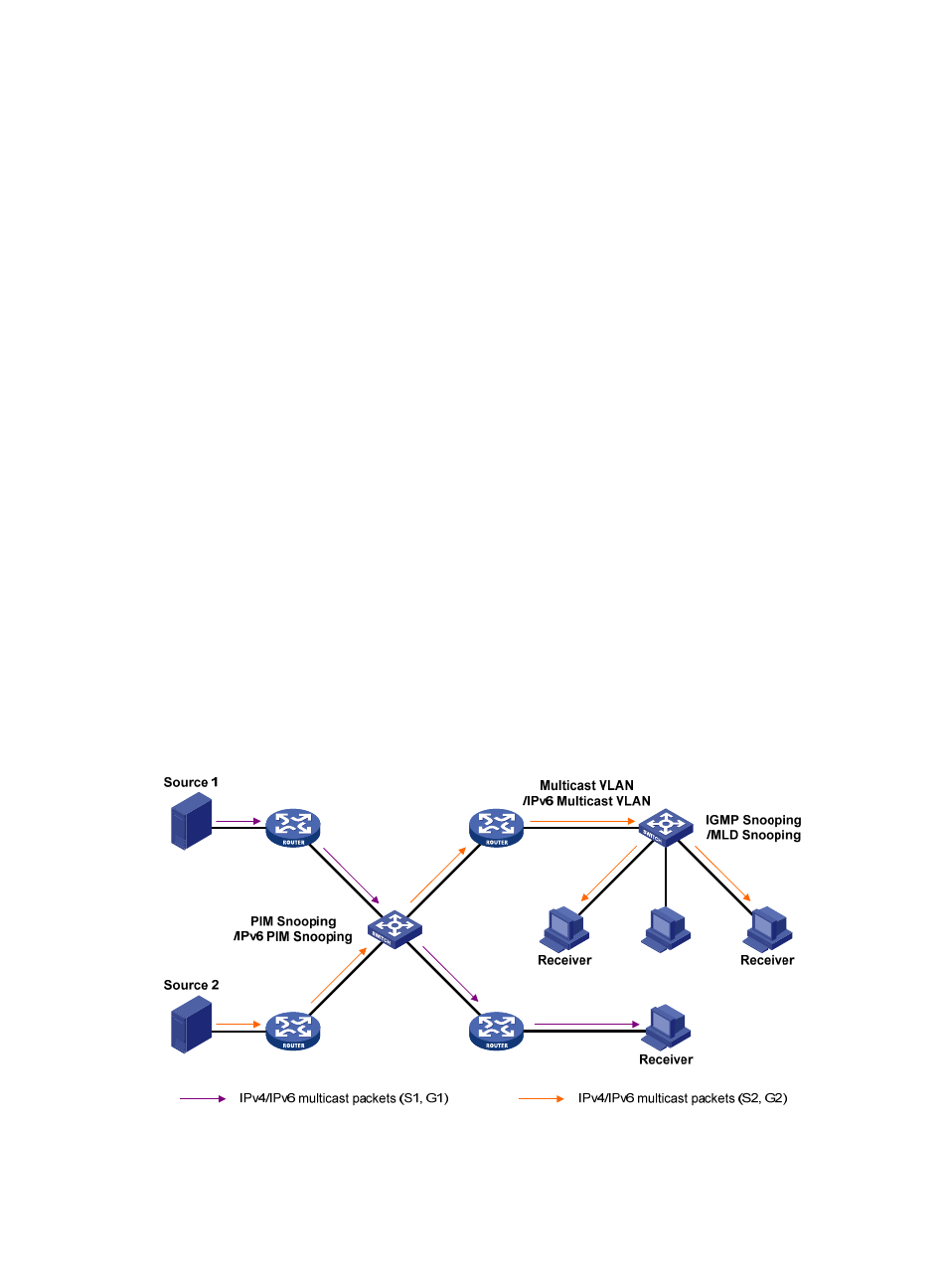Layer 2 multicast protocols – H3C Technologies H3C S12500 Series Switches User Manual
Page 26

10
•
Multicast group management protocols:
Typically, the internet group management protocol (IGMP) or multicast listener discovery protocol
(MLD) is used between hosts and Layer 3 multicast devices that directly connect to the hosts. These
protocols define the mechanism of establishing and maintaining group memberships between
hosts and Layer 3 multicast devices.
•
Multicast routing protocols:
A multicast routing protocol runs on Layer 3 multicast devices to establish and maintain multicast
routes and forward multicast packets correctly and efficiently. Multicast routes constitute loop-free
data transmission paths (also known as multicast distribution trees) from a data source to multiple
receivers.
In the ASM model, multicast routes include intra-domain routes and inter-domain routes.
{
An intra-domain multicast routing protocol discovers multicast sources and builds multicast
distribution trees within an AS to deliver multicast data to receivers. Among a variety of mature
intra-domain multicast routing protocols, protocol independent multicast (PIM) is most widely
used. Based on the forwarding mechanism, PIM has dense mode (often referred to as
"PIM-DM"), and sparse mode (often referred to as "PIM-SM").
{
An inter-domain multicast routing protocol is used for delivery of multicast information between
two ASs. So far, mature solutions include Multicast Source Discovery Protocol (MSDP) and
Multicast Border Gateway Protocol (MBGP). MSDP propagates multicast source information
among different ASs. MBGP is an extension of the Multi-protocol Border Gateway Protocol
(MP-BGP) for exchanging multicast routing information among different ASs.
For the SSM model, multicast routes are not divided into intra-domain routes and inter-domain
routes. Because receivers know the position of the multicast source, channels established through
PIM-SM are sufficient for the transport of multicast information.
Layer 2 multicast protocols
Layer 2 multicast protocols include IGMP snooping, MLD snooping, PIM snooping, IPv6 PIM snooping,
multicast VLAN, and IPv6 multicast VLAN.
Figure 9 Positions of Layer 2 multicast protocols
•
IGMP snooping and MLD snooping:
